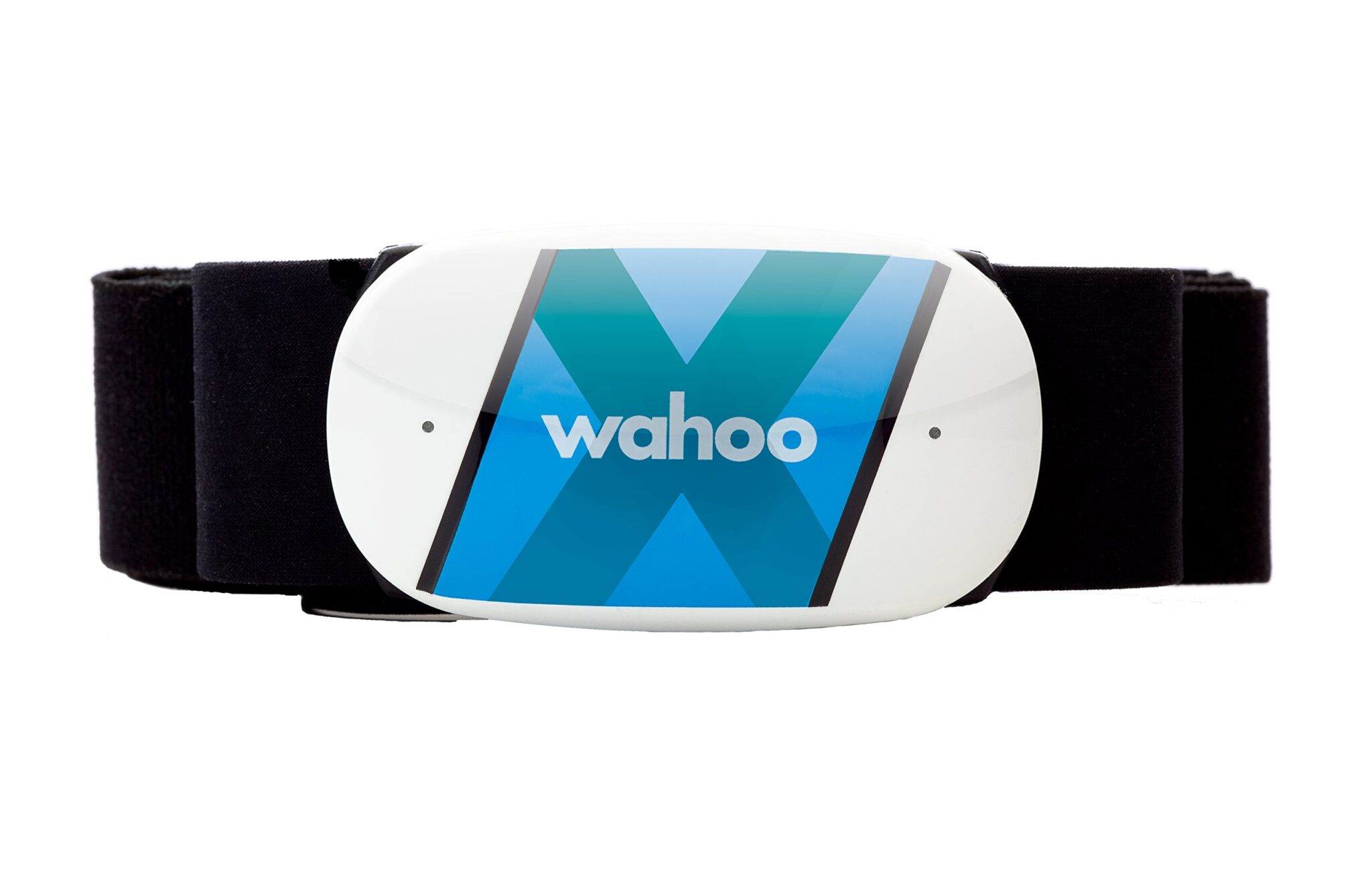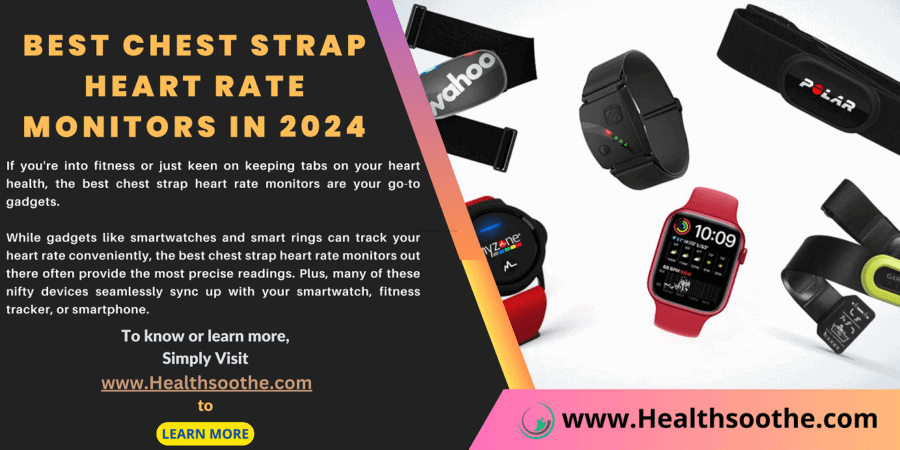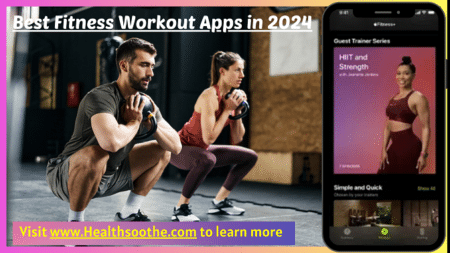If you're into fitness or just keen on keeping tabs on your heart health, the best chest strap heart rate monitors are your go-to gadgets.
While gadgets like smartwatches and smart rings can track your heart rate conveniently, the best chest strap heart rate monitors out there often provide the most precise readings. Plus, many of these nifty devices seamlessly sync up with your smartwatch, fitness tracker, or smartphone.
Although chest strap heart-rate monitors have a reputation for being somewhat uncomfortable during workouts, we decided to test out several monitors to identify the ones that could stand up to the challenge.
In this article, we've rounded up our top picks for the best chest strap heart-rate monitors. And do not worry, we made sure to keep this list updated regularly as new models hit the market, to give you the best chest strap heart rate monitors available right now.
How We Tested to Know the Best Chest Strap Heart Rate Monitors

- Testing Function During Exercise: We put each of these heart-rate monitors through its paces during strength training and walking sessions to gauge their performance across different activities.
- Assessing Comfort: We evaluated the comfort level of the chest straps while wearing them during workouts.
- Examining Features: We considered various features, such as connectivity with other devices or apps, and the ability to track additional metrics alongside heart rate. Battery life was also taken into account.
- Comparison with Apple Watch: To gauge accuracy, we compared the performance of these monitors with that of Apple Watch, which consistently tracks the heart rate during workouts. Although this may not be the most precise method, it provided a basis for comparison, given the accessibility and reliability of Apple Watch data.
The Top 5 Best Chest Strap Heart Rate Monitors for 2024
1. Best Chest Strap Heart Rate Monitor for Novices & Beginners - MyZone MZ Switch

The MyZone MZ Switch stands out as an uncomplicated option for newcomers diving into heart-rate monitoring. This kit includes both chest and wrist straps for enhanced precision, alongside a convenient carrying case to keep everything organized.
The wrist strap sports a circular ECG and PPG sensor resembling a watch face. Its button-operated on/off switch lights up for easy control, while the Velcro closure ensures a snug fit. On the other hand, the chest strap secures effortlessly with buttons.
Pairing with the MyZone app is a breeze, and you can also sync it with Apple Watch, Samsung, Garmin devices, and third-party apps like Strava, My Fitness Pal, and MapMyRun. We seamlessly integrated the MZ Switch into our strength training sessions via the Future app, retrieving our data afterward.
MyZone's use of Effort Points, indicating heart rate percentages across various zones delineated by colors, simplifies tracking efforts. Moreover, their clear explanation of each zone's significance and the importance of understanding one's maximum heart rate adds to its user-friendliness. ‘
Although the MZ Switch's metrics slightly differed from that of Apple Watch, this was expected given MyZone's unique rating system. Despite its relatively high price tag of $160, the MyZone MZ Switch proves its worth, especially for individuals seeking straightforward heart-rate monitoring during interval or strength training sessions, or any physical activity.
It is available at $160 at MyZone.
Specs
- Strap size: 24 to 34 in
- Connectivity: Bluetooth and ANT Plus
- Battery duration: 6 months
Pros
- Easy setup and app connectivity
- Includes both chest and wrist straps
- Compatible with various fitness apps
Cons
- Pricey
- Battery life could be improved
2. Best Chest Strap Heart Rate Monitor for Low Budget - CooSpo H808S

If you're on a budget but still want a reliable heart-rate monitor, consider checking out the CooSpo H808S. It comes with its own app called CoospoRide, and it's also compatible with popular fitness apps like Polar, Wahoo, Endomondo, UA Run, Garmin, Peloton, and more.
Similar to the MyZone MZ-Switch, the CooSpo H808S features LED lights to indicate when it's connected. Just make sure to moisten the sensors on the strap before securing it, as it needs to make good contact with your skin. Plus, it's waterproof, making it suitable for sweaty workouts or swimming sessions.
We connected it to a Wahoo account during walks, and it performed well. If you're into long-distance running or cycling classes, you might find this heart-rate monitor particularly useful. However, it might not be as effective for strength training compared to endurance activities.
One of the standout features of the CooSpo H808S is its versatility. You can connect it to various apps and Bluetooth devices, allowing you to track your heart rate across different platforms without breaking the bank.
It is available at $33 at Amazon.
Specs
- Strap size: 25 to 37 in
- Connectivity: Bluetooth and ANT Plus
- Battery duration: 300 hrs
Pros
- Inexpensive
- Can sync to various apps, GPS units, and smartwatches.
- Great for endurance athletes
- Comfortable strap with a lightweight feel
Cons
- Best suited for long-distance activities
- Doesn't have its universal app
3. Best Chest Strap Heart Rate Monitor for the Outdoors - Polar H10

The Polar H10 proves handy for outdoor pursuits. To maximize its potential, you'll want to grab the Polar Beat app. It's compatible with both iOS and Android platforms and utilizes Bluetooth and ANT Plus connections to sync with various gadgets.
What's neat is that the Polar H10 can link up with two Bluetooth devices simultaneously, such as a smartwatch and compatible fitness gear like certain treadmills or exercise bikes. Plus, it's a breeze to clip on and customize the heart-rate monitor, available in different sizes to suit most folks.
Once you're within the app, connecting to the heart-rate monitor is a cinch, provided your phone's Bluetooth is activated. Within the app, you'll find a range of 19 activities to track your heart rate, even ones sans GPS, like weightlifting, treadmill runs, tennis, badminton, indoor cycling, or other indoor pursuits. This monitor is even waterproof, so it's suitable for swimming.
We put this heart-rate monitor through its paces during our strength training sessions using the Future app and during a couple of strolls. Since Future syncs with the Apple Watch, we could cross-reference the data.
During strength training, the Polar app didn't record much apart from workout duration, but the Apple Fitness app displayed average heart rate, aligning with the Polar H10 data.
However, for indoor and outdoor walks, the Polar H10 provided detailed stats: distance covered, average heart rate, calories burned, max heart rate, pace, and fat burn percentage, complete with a line graph depicting heart rate and time during the activity.
If you're primarily into outdoor activities like running, jogging, hiking, skating, skiing, or rowing, the Polar H10 is a solid choice. And if you're already rocking a Polar watch, pairing it with this heart-rate monitor can level up your game even further.
The Polar H10 is available for $86 at Amazon and $106 at Walmart.
Specs
- Size of strap: One size ranges from 22 to 27 inches, while the other spans 26 to 37 inches.
- Connection options: Bluetooth and ANT Plus are available.
- Battery duration: Lasts up to 400 hours.
Pros
- The strap is adjustable and hardly noticeable during wear.
- Simple to pair with the app.
- Supports Bluetooth and ANT Plus connectivity.
- Suitable for various activities.
Cons
- Costly.
- May not provide complete data for indoor activities.
4. Best Chest Strap Heart Rate Monitor that Offers the Best Comfortability - Wahoo Tickr X

The Wahoo Tickr X stands out as the preferred heart-rate monitor due to its remarkable comfort. You might even forget you're wearing it! It's a breeze to strap on and adjust, plus it's waterproof, ensuring it remains functional even during intense workouts.
To sync it up, you'll need the Wahoo app, available for both iOS and Android. Moreover, it plays nicely with over 50 other fitness apps and Garmin watches.
We took this heart-rate monitor for a spin during a Future strength training session and a couple of treadmill walks. It proved most suitable for distance-based activities like walking, running, or cycling. It's equipped to track various exercises including running, treadmill, cycling, Kickr, and exercise bike usage.
While it lacks options for some activities, it did manage to detect our strength training session. Comparing its data with that of the Apple Watch, we found both recorded similar average heart rates. However, it didn't provide much additional insight beyond that, which could be a consideration if you crave detailed exercise data.
For those gearing up for a race, we'd recommend this heart-rate monitor. The data it captured during our walks offered a comprehensive view of pace, elevation gain, laps, time, and miles covered.
Whether you're going the distance or hitting short bursts, the Wahoo Tickr X remains securely in place and comfy throughout.
It is available for $80 at Amazon and Walmart
Specs
- Strap size: 23 to 48 in
- Connectivity: Bluetooth and ANT Plus
- Battery duration: 500 hrs
Pros
- Ideal for cyclists and runners
- Compatible with a wide array of third-party fitness apps
- Comfortable chest strap
Cons
- Not suited for all activities
- Pricey
5. Best Chest Strap Heart Rate Monitor with Long Battery Life - Garmin HRM-Pro

If you're a dedicated Garmin fan or searching for a heart-rate monitor with extended battery life, the Garmin HRM-Pro could be just the ticket. This nifty device boasts an impressive battery life, clocking in at around a year if used for an hour a day.
Plus, it's waterproof, making it suitable for aquatic workouts too. Connecting it to your gadgets via the app is a breeze, and it plays nice with third-party fitness apps like Zwift or Strava, as long as they're Bluetooth-compatible.
Now, Garmin's reputation precedes it, especially in the running and cycling scenes. However, considering its price tag, one might hope for a bit more versatility across different types of exercises.
Take our experience, for example. We gave the Garmin a go during a strength training session via the Future app, which syncs up with that of Apple Watch. What caught our eyes was that the data it churned out seemed a tad exaggerated.
During a 45-minute workout, it claimed we torched over 4,000 calories, while our Apple Watch put it at a more realistic 241 calories. These discrepancies serve as a reminder not to take wearable data as gospel truth.
Now, we didn't take the Garmin out for a run, but we did give it a whirl during a low-impact activity: walking. Surprisingly, it performed better here, dishing out useful info like laps, time, distance, and average speed. This leads us to think that the Garmin HRM-Pro is best suited for distance-focused athletes.
It might also gel better with a Garmin smartwatch, which we don't own – something worth mulling over if you're eyeing the Garmin HRM-Pro.
It is available for $129 at Amazon.
Specs
- Strap size: Adjustable from 25 to 43 inches, with an optional extender for up to 56 inches.
- Connectivity: Hooks up via Bluetooth and ANT Plus.
- Battery life: Impressive 12 months.
Pros
- Delivers detailed stats for runners, cyclists, and swimmers alike.
- Long-lasting battery.
- Comfy chest strap.
Cons
- Pricey.
- Not as user-friendly for various workouts.
- Might work best when paired with a Garmin watch.
So, What is the Overall Best Chest Strap Heart Rate Monitor?
The ideal chest strap heart-rate monitor varies based on your requirements, such as the activities you intend to use it for. We suggest the Wahoo Tickr X for its exceptional comfort and the MyZone MC Switch for those who are new to heart-rate monitoring.
What are the Factors to Consider When Buying/Choosing Your Chest Strap Heart Rate Monitor?
Before making a purchase, it's important to consider the intended use of the heart-rate monitor. While most are suitable for various cardio activities like running and cycling, not all are suitable for swimming.
Cost is another factor to consider, with reliable options available for under $50, while more advanced models with additional features may cost over $150.
Battery life is a crucial consideration, with some monitors lasting over a year on a single charge, while others require more frequent charging or battery replacement, depending on usage.
Finally, the intended connectivity of the monitor is important. Whether primarily connecting to a smartphone or other devices, the presence of ANT Plus or Bluetooth connectivity should be taken into account, as it affects compatibility and usability. While many monitors now offer both options, it's essential to verify before making a decision.
How to Choose the Best Chest Strap Heart Rate Monitor for You
When you're on the hunt for the perfect chest strap heart-rate monitor for your workouts, there are quite a few factors to mull over. Your decision will hinge on personal preferences and the kind of exercises you do regularly. Let's dive into the nitty-gritty details:
- Strap Width: First off, think about whether you'd prefer a slim or wider strap for your heart-rate tracker. Comfort is key here.
- Module Size: Some chest straps have compact modules that don't protrude from the edges, while others boast larger monitors. It's all about what feels right for you during your workout sessions.
- Internal Storage: Hate carrying your phone around while you sweat it out? Look for a monitor that can stash your data internally, then sync it up with your phone later via an app.
- Metrics: Decide what metrics matter most to you during your workouts. Fancy models can track a boatload of stats in real-time, from cadence to calorie burn, while simpler ones stick to heart rate.
- Battery: Keep an eye on the battery situation. Some monitors have rechargeable batteries, while others boast lengthy life spans but aren't rechargeable or replaceable. No one wants their monitor to die mid-run!
- Chest Strap vs. Wrist-Worn Monitors: Both do the job, but they use different methods. Chest straps with electrical sensors are considered more accurate, especially during intense workouts. Wrist-worn monitors, on the other hand, use optical sensors, which are better for restful activities.
- ANT Plus vs. Bluetooth: Bluetooth is common in wrist-worn monitors but limits you to one device connection at a time. ANT Plus allows connections to multiple devices simultaneously, great for data junkies. Just be aware that not all phones support ANT Plus without an adapter.
In a nutshell, weigh your options carefully, and pick the monitor that ticks all your boxes. Whether you're a data fiend or just want a simple heart-rate tracker, there's something out there for everyone.
Frequently Asked Questions on Chest Strap Heart Monitors
Now, between chest straps and wrist-worn heart-rate monitors, which one takes the accuracy crown?
Can heart rate monitors be trusted to give accurate readings?
Well, it hinges on the type of device you're relying on. Generally, chest strap heart-rate monitors are known for giving the most precise readings.
What is the most accurate heart rate monitor tracker?
The Polar H10 Heart Rate Sensor was the top-performing chest-strap monitor we tried. Throughout testing we found the real-time ECG/EKG monitoring accurate, and we loved that the ANT+ connectivity options allowed us to record and track our HR via the free Polar app.


